Low-key lighting
Low-key lighting can be identified by the used of harsh shadows which tend to fill the majority of the frame. This lighting style is not the most flattering, but is excellent for creating moody and mysterious images due to the impact the deep blacks. Often, low key style lighting is combined with side or split lighting, this causes the light to rake across the subject and reveal imperfections, this can be beneficial for various situations such as when shooting historic artifacts or portraits where blemishes like wrinkles add character to the photograph.
 This photograph has only one light, positioned to the front of the model (left of image) The photographer probably used a spill-kill or snoot to help direct the light onto the key areas of the subjects face and chest. the photographer has allowed the back of the model to fade into the shadows instead of introducing a rim light. In my opinion, the photographer made the correct decision because the model is posed in such away that it looks like she may be stepping out, towards the light.
This photograph has only one light, positioned to the front of the model (left of image) The photographer probably used a spill-kill or snoot to help direct the light onto the key areas of the subjects face and chest. the photographer has allowed the back of the model to fade into the shadows instead of introducing a rim light. In my opinion, the photographer made the correct decision because the model is posed in such away that it looks like she may be stepping out, towards the light.
This photograph has a somewhat innocent feel to it, which is rare for low-key styled photo. This innocence is created by asking the model to gaze at the light and by shooting from a lower angle.
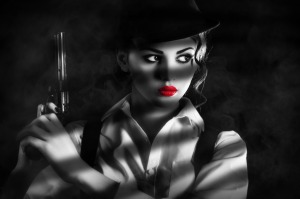
In this Image, Lowkey lighting has been used to add dramatic effect to the photo. A honeycomb or possibly snoot has been used with a grid placed over it to give the impression it has been shot beside a window. the harsh lighting makes the smoke more prominent, which adds texture to the photograph. Unlike the previous photo, I think this image would’ve benefited from a secondary light being positioned behind the subject, creating a rim lighting effect and causing further separation between the model and the background.
Mid-Key
When lighting in mid-key, there should be an even distribution of shadows and highlights throughout the image, with the majority of the frame being occupied by the mid-tones. This is a very popular lighting style in fashion photography because it creates a well lit image, while keeping the integrity of the clothes intact. most mid key images consist of 2 light sources, or 1 light and a reflector, to ensure the light spreads evenly across the image, creating more mid-tones.
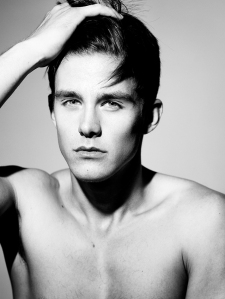
This photo, taken by professional photographer Richard Pier Petit, is an example of mid-key lighting. The subject is well lit, but there are still shadows around the edges of the face and body. This photo has a good tonal range, there are bright highlights and deep shadows which the photographer managed to balance well. There are also catch lights in the pupils of the eye which help add life to the photograph and draw the audience in. Much like the low-key style of lighting, this photograph has a moody feel to it, however it has been shot with a much gentler and more flattering lighting set up.
I think there were 2 lights used to create this image, The key light is above the subject, slightly to the left of the image, this light may have been fitted with a shoot through umbrella or small softbox. The second light is illuminating the background, this light is very soft which leads me to believe a large softbox may have been used. The photographer also chose to use a grey background which is darker than the subjects skin tone to help balance out the whites and blacks in the image, making the tonal range more balanced.
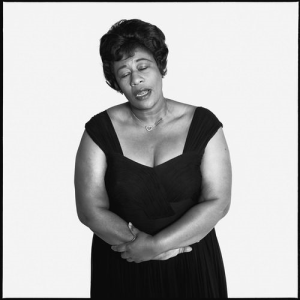
This photograph of Ella Fitzgerald was taken by Richard Avedon in 1959 would be described as mid-key because there are both blacks and whites present, however most of the canvas is mid-toned. Unlike many photographs shot in medium key, Avedon opted for a very light background, It is still grey, but much lighter than a typical mid-key image. The reason for this is because of Fitzgerald’s darker skin tone, had a darker background been favored, the image would begin to fall into a more low-key styled photograph.
Avedon has used 45 degree lighting to style this image. the lights are positioned at either side of the photographer, facing the model from above. the light on the right side was the key light, the light on the other side would have been set to around 2 stops less than the key light. Both lights look like they may have had a softbox attached to diffuse the light.
High-Key
For a Photograph to be described as high-key, the image must consist mostly of lighter tones and contain no hard shadows. The background in a high key photo is almost always white and a few areas of the subject should come close to matching the background. Typically 2 or more lights would be used to create this style of lighting. large softboxes are often used when shooting high-key to ensure the light is soft and diffused. This lighting technique gives a very innocent feel to a photograph which makes it extremely popular for photographing children and babies.
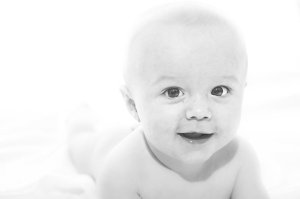 This photograph is very high key because the highlights fill most of the canvas, and there are almost no shadows. The baby’s body begins to fade into the background and there is very little definition in the image. Contrary to how high-key images are usually shot, I think this photo only has one light source, on the left of the image because there is a soft shadow under the child’s chin. This light would’ve had a large softbox on it to ensure the light filtered evenly over the subject. It is likely that a reflector was used to bounce light back into the right side of the face.
This photograph is very high key because the highlights fill most of the canvas, and there are almost no shadows. The baby’s body begins to fade into the background and there is very little definition in the image. Contrary to how high-key images are usually shot, I think this photo only has one light source, on the left of the image because there is a soft shadow under the child’s chin. This light would’ve had a large softbox on it to ensure the light filtered evenly over the subject. It is likely that a reflector was used to bounce light back into the right side of the face.
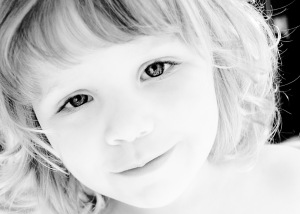 The background in this image is black, which is unusual for high key photography. However, the photographer has managed to make it work by using such a tight crop on the image, that very little of the background can be seen. This photo is lit from the top right, creating a very slight shadow under the chin on the left. however I would also assume a second light or reflector was used to eliminate the shadows on the face.
The background in this image is black, which is unusual for high key photography. However, the photographer has managed to make it work by using such a tight crop on the image, that very little of the background can be seen. This photo is lit from the top right, creating a very slight shadow under the chin on the left. however I would also assume a second light or reflector was used to eliminate the shadows on the face.